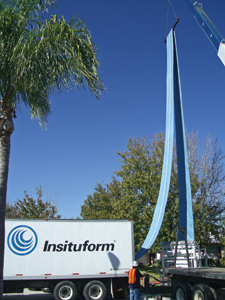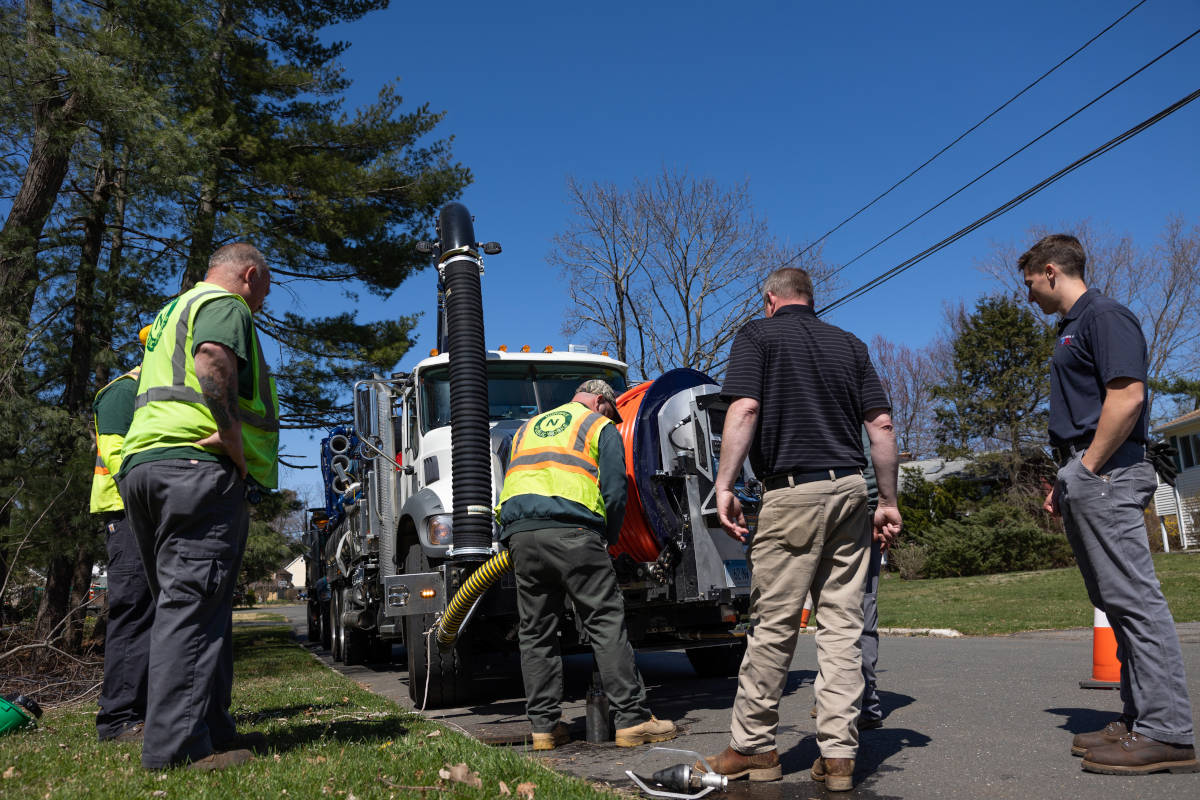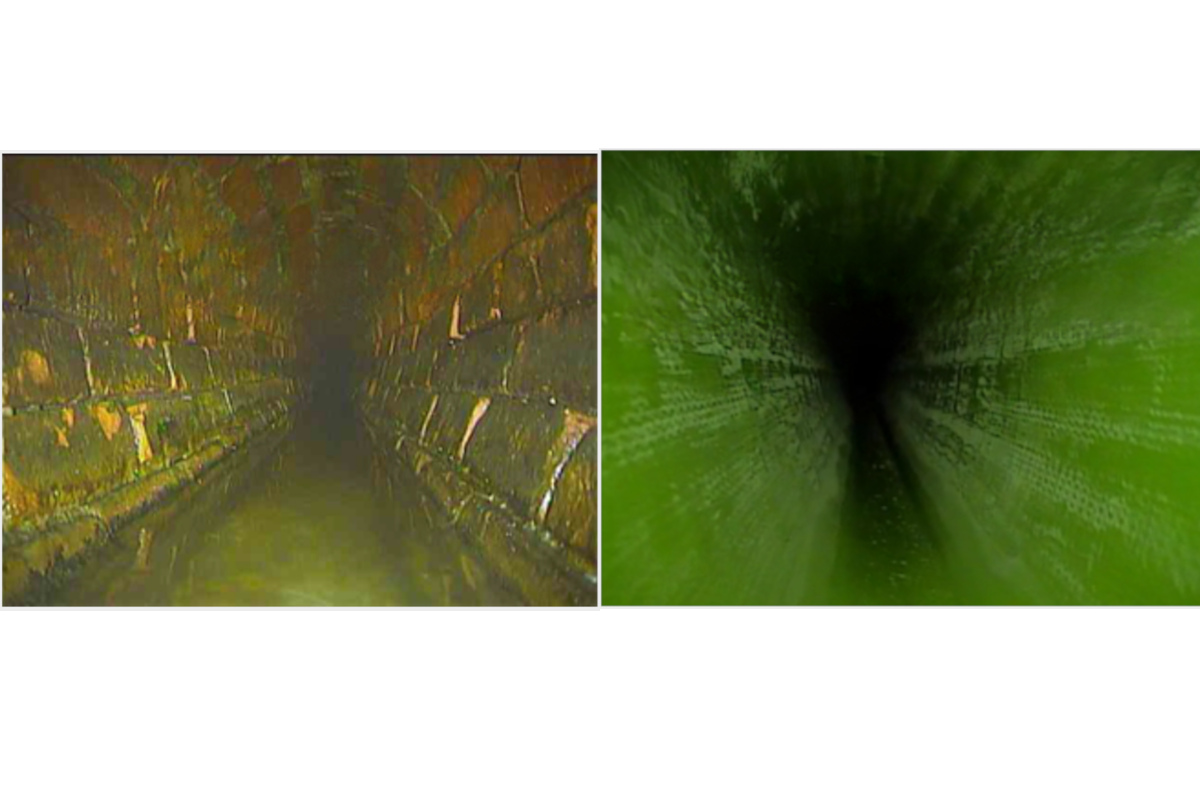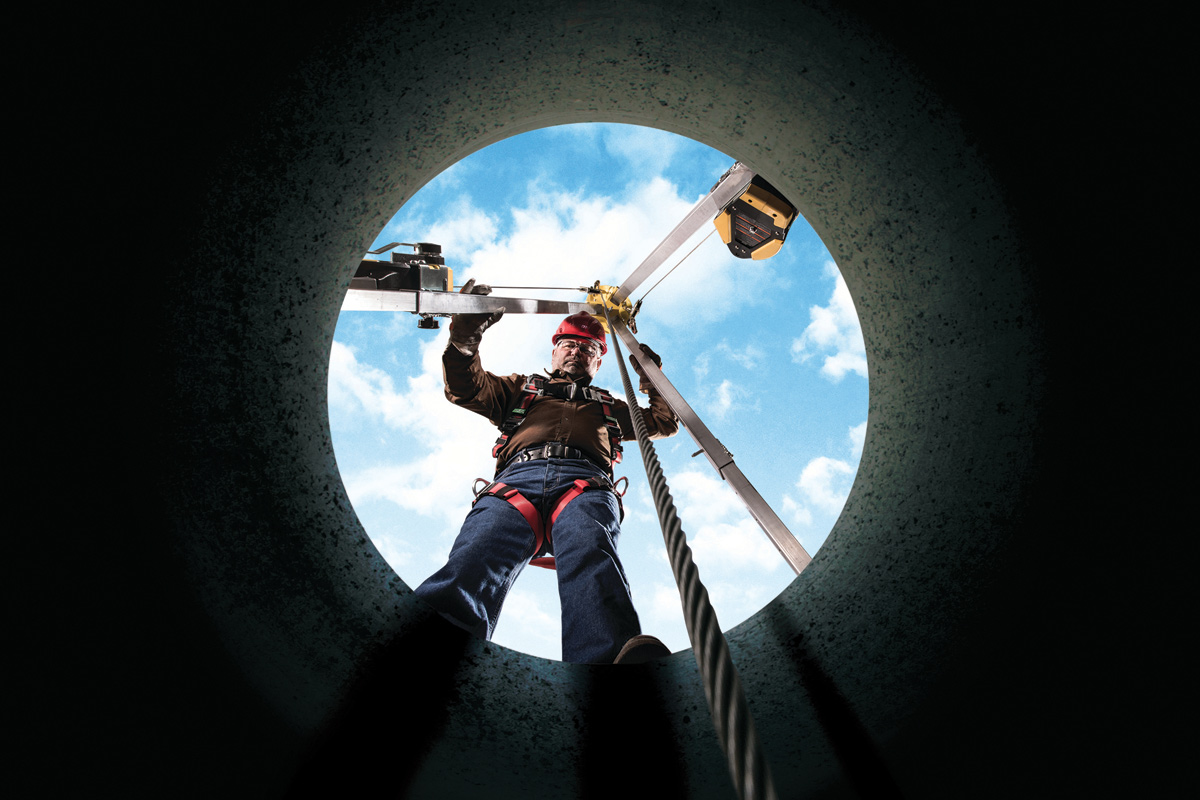
CIPP Turns 40
Forty years ago, the rehabilitation of an egg-shaped sewer was successfully completed in the London Borough of Hackney. Those who were involved with this seemingly inconsequential project in 1971 had no idea this would be the catalyst that changed the way pipes are rehabilitated and become a billion-plus dollar worldwide industry.
At the time (as the story goes), future Insituform founder Eric Wood was an agricultural engineer and innovative guru who was brought in to find a solution for a leaky pipe in an air duct located above beds of mushrooms at a mushroom farm. Outright replacing the pipe would be expensive and tricky due to its location.
Wood came up with the cured-in-place pipe solution to address the problem and the rest, as they say, is history. 2011 marks that anniversary — the birth of the cured-in-place process, simply known as CIPP — as well as the 40th anniversary of Insituform Technologies itself.
Insituform Technologies, founded by Wood in the United Kingdom but now headquartered in St. Louis, Mo., has churned into a global powerhouse in the trenchless market and the CIPP process has evolved into the most popular and cost-effective method to rehabilitate underground pipes.
Insituform controlled the patents to the CIPP process until February 1994, giving the company a 23-year head start on any competition and allowing it to build its brand and solidify its market presence. Expiration of the patents opened the door for other companies to challenge Insituform, as well as expand the burgeoning pipe rehabilitation market. Incredibly, Insituform has retained the No. 1 market share position, and along the way continues to advance the process, expand into other markets around the world, as well develop other technologies and products.
“That’s really the great story about Insituform,” says Insituform CEO J. Joseph Burgess. “While we invented the CIPP process 40 years ago, it’s through the efforts of our folks like Tom Driver and Lynn Osborn throughout the years that we have maintained our leadership position in terms of technology and market share throughout that entire timeframe. That is pretty impressive.”
And unusual — for one company to have a 40-year stranglehold on such a process that is by far the preferred method of pipe rehabilitation and the cornerstone of the trenchless market. This accomplishment is a point of professional pride for Insituform employees.
“I’ve told our employees that you can go back in any market, whether it’s computers or cars, pick the industry leaders now and then back up 40 years ago and, nine times out of 10, they will be different,” Burgess notes. “For a relatively small company like Insituform to have maintained the market position and leading position in terms of technology, that’s impressive. We have continued to innovate with new installation techniques and new products to drive the market forward. We are focused and dedicated to this industry and to maintaining the leadership of this company.”
Eric Wood was killed in a plane crash in January 1994 at the age of 59 — just as the age of the CIPP process was opening to competitors — but he was able to see and enjoy the success of what he created.
To date, Insituform alone has rehabilitated more 19,000 miles of underground pipes worldwide. Industrywide, it is estimated that CIPP has been used to rehabilitate 35,000 miles of pipe since 1971.
“In a few years, [Insituform] can say that the amount of CIPP we have installed could circle the globe,” states Lynn Osborn, a senior applications manager at Insituform.
CIPP History
The first CIPP installation was a far cry from the technology, setup and speed that are used today. Wood impregnated a felt tube with polyester resin, wrapped it in a plastic sheet, dragged it 230 ft into the 46-in. by 24-in. diameter egg-shaped, brick sewer and inflated it with air. Then left it to cure ambiently— the pipe was fixed.

We tested the pipe in 1991 and again 10 years later,” Osborn says. “At 20 years, the pipe’s flexural modulus and strength values exceeded the current standards in the United Kingdom by 30 percent. It had similar properties at the 30-year test. It was an excellent installation, which is amazing considering that was the first installation.
“It goes to show you Eric’s diligence and desire to do good work,” he adds. “We’ve had so many improvements in resins and curing since then. It just shows how flexible the product is in its application.”
Insituform plans to re-test the pipe for the 40th anniversary later this year and has no reason to believe it won’t provide similar results.
Always the innovator, Wood recognized a great business opportunity and seized it. At the time, the only other means being used to rehab underground pipes — besides replacement — was sliplining and grouting. Wood applied for the CIPP process patent in 1970 and it was granted 1971. He came up with the name Insituform using the Latin insitu — meaning in place — and form. Straight to the point: Insituform.
“That’s what we do. We create a new pipe within a pipe in place,” says Tom Driver, longtime Insituform employee and resident company historian by virtue of his tenure with the company and close friendship with Eric Wood. He “retired” in June 2010 after 27 years and now serves as a consultant to the company.
Driver officially joined Insituform as a full-time employee in January 1983 but became involved with the CIPP process in 1977 while working as a consulting engineer for the City of Northbrook, Ill., to find the most effective way to solve inflow-and-infiltration problems plaguing the city’s sewer system. He saw the CIPP technology at an APWA workshop in Chicago and thought the product would do the trick.
“I saw the Insituform process and thought ‘This would be really great if it works,’” Driver remembers.
He wrote a study of the Northbrook project and the CIPP process and started doing consulting work for Insituform in 1981, becoming a full-time employee two years later as technical director for the company. He hired Lynn Osborn in 1984 to be his associate technical director.
“During those early days, we spent most of our time on training our North American licensees,” Driver recalls. “We spent a lot of time putting on seminars [for municipalities] and educating the market.”
CIPP wasn’t a hit right out of the gate. Acceptance by a skeptical public works and engineering audience was a slow and, at times, grueling process — Osborn and Driver spent a majority of their time on the road, educating potential customers and licensees on how the process worked, the testing that had been done, how it was designed, installation procedures and the like.
The 10 Most Significant Insituform Installations of the Past 40 Years
1. World’s First CIPP installation in London’s East End, 1971
The Greater London Council, through the Metropolitan Water Board, was having extensive problems in the late 1960s with water mains and sewers. A chance discussion led to the inventor of the Insituform process, Eric Wood, to carry out the first inversion on 230 ft of an egg-shaped sewer. This pipe tested at 20 years and at 30 years above current standards. Forty-year testing is planned for later this year.
2. First CIPP installation in the United States, Fresno, Calif. –1976
Insituform rehabilitated a 12-in. diameter line located under a zoo in Fresno.
3. Wellesley College, Boston – 1994
This project involved seven miles of 48- to 60-in. diameter interceptor sewers. With a construction cost of $13 million, it was (at the time it was completed) the largest job in Insituform’s history.
4. Atlanta Sewer Rehabilitation Project — From 1994 to 2002
Insituform worked to complete the rehabilitation of 100 miles of Insituform CIPP in Atlanta, at the time the largest single city-company partnership of its type in the United States. Insituform continued its relationship with the City of Atlanta with the rehabilitation of an additional 65,000 ft of small-diameter wastewater pipelines beginning in 2009.
5. Phoenix Project – 2002-2005
Insituform rehabilitated the entire length of the 26-mile long Salt Rive Outfall, which runs through the cities of Tempe, Scottsdale, Phoenix and Glendale. The pipe diameters ranged from 48 to 81 in.
6. Madison Avenue Project in New York – From 2008-2009
Insituform rehabilitated 10,000 ft of a 48-in. water main running beneath Madison Avenue in Manhattan, N.Y. This project, using the InsituGuard HDPE close-fit solution, was completed with minimal disruption to this metropolitan area. The 150-year old cast iron water main had been out of service for close to 10 years due to deterioration and leaking.
7. Sacramento, Calif. Project—2009-2010
Insituform won a contract to rehabilitate nearly 45,000 ft of sanitary sewer for the Sacramento Area Sewer District. Much of the project included the rehabilitation of medium- and large-diameter sewers using the iPlus Composite reinforced CIPP product. The project was the largest in Insituform’s 10-year history with the City of Sacramento and was expected to be completed in less than one year. Insituform developed new equipment for use on this project which met Sacramento’s strict requirements for green installation practices.
8. San Diego Mission Gorge – From 1996-1998
This project involved the rehabilitation of seven miles of 36- to 42-in. diameter pipes located in an environmentally sensitive area. Each day, more than a million gallons of river water had been infiltrating the deteriorated sewer, whose original flow capacity was already down 14 percent. The rehabilitation, which required 25 separate inversions, was completed with severe constraints on when and how the work could be performed.
9. Perry Nuclear Plant, Cleveland, Ohio – 1998
Insituform developed a reinforced pressure pipe CIPP product to use at the Perry Nuclear Plant. The project team worked on the selection,design and installation of the CIPP for more than a year. Using CIPP to reconstruct a pressurized service water system with a stand alone design condition had never been attempted at a nuclear power plant. Insituform rehabilitated approximately 5,100 ft of small to large diameter pipelines. Named Trenchless Technology Project of the Year in 1998.
10. San Diego International Airport – 2010
The Trenchless Technology 2010 Project of the Year, this project used iPlus Composite to increase the load-bearing capacity of nearly 1,700 ft of a 96-in. sanitary sewer trunk main that runs 25 ft directly below the site of a planned new 10-gate terminal. It involved the single largest shot (1,400 ft) of iPlus Composite to date.
Osborn says the public works folks liked what they saw and understood how the process would benefit their aging systems. There was one problem: Cities and municipalities used a competitive bidding system and there was no competition to bid against Insituform.
“For many municipalities, it was a hard sell because there was no competition. The contracts were negotiated rather than bid,” Osborn says. “That was a little bit of an obstacle that was moved out of the way once the patents expired and we started getting competitors.”
Along the way, Insituform led the way in establishing industry standards to CIPP through the ASTM, working with its committees and competitors. The first was ASTM F1216, which is a procedure for the installation and design of cured-in-place pipes. F1216 is still used today.
The first CIPP project in North America occurred in 1976 in Fresno, Calif., and in 1980, Insituform of North America was formed. Over the years through acquisitions and mergers, Insituform Technologies formed in 1980. The global reach of Insituform is astounding, with operations in over 25 countries and five continents.
“We have a nice business in Europe,” Burgess says. “We have about a 50 percent share of the market in North America and about 20 percent in Europe and we’ve been making that business significantly more profitable over the last few years. This year we will do a little more than $50 million in Asia from really zero in 2008. When you look at the need and the market potential [in the Asia-Pacific markets], we think over a reasonable amount of time that that business can be as big as our North American business.”
Opening the Market
Once the patents expired in the mid-1990s, the effect was huge. “[Having competition] grew the market because more people were selling the product,” Osborn says. “It also forced us and everybody else to work on lowering installation costs as much as possible to be competitive in the bidding process.”

And it also energized company officials to continue to improve its existing products and technologies and expand into others, such as lateral cutters and robotics, CCTV inspection cameras, point repair systems, lateral rehab technology — the list goes on and on. The full extent of the Insituform reach hit Osborn recently. He recalls attending the IFAT show in September — the largest public works show in the world — held in Germany and he marveled at what he saw as he walked the exhibit halls dedicated to sewers, water and rehab. “There were hundreds of booths with robots and cameras and lateral products, as well as cured-in-place products,” he says. “All I could think of as I walked through was that this all came from Eric Wood. Little of this would be here if Eric had not started [the CIPP] industry.”
The impact CIPP has had on the municipal underground infrastructure market cannot be understated. NASTT executive director Mike Willmets worked for the City of Ottawa, Canada, for more than 35 years and saw firsthand how it transformed cities’ approach to pipe rehab. “It gave us another tool,” he says. “The options we previously had were endless repairs and costly replacement. The cost-savings of CIPP are enormous, not to mention the environmental and social benefits. CIPP is a minor miracle for municipalities. The liners are more sound than a new pipe.”
Driver and Osborn credit Insituform’s success to company officials for continuing to invest in research and development of technology. “We’ve had a lot of evolution over the years in applications from sewers to water lines to industrial lines… the different shapes, sizes, installation methods,” Driver says. “We’ve done a lot of work with resins and how to cure those resins, as well as [improving] the equipment used to install the product.”
In 2009, Insituform launched its InsituMain technology for pressure pipes and is continuing to expand into the water market. That same year, Insituform also acquired The Bayou Companies and Corrpro Companies, adding to its family of energy and mining companies, which included United Pipeline Systems. This allowed Insituform to expand into the industrial pipeline coatings and corrosion/cathodic protection sectors.
“I think you will continue to see us continue to integrate those businesses. You will also see us innovate and bring in new products to expand those businesses,” Burgess says. “Insituform three years ago was essentially a municipal contractor focused on the wastewater side. The future for us is certainly to expand that business into new geographies but to also modify our products for drinking water and to continue to grow in the energy and mining pipeline rehab markets, which are large, global markets.”
What would Eric Wood think about all that has happened over the last 17 years since his death? Some say he would be shocked at the growth but Driver believes he would be thrilled with the innovations that have occurred. “What he would enjoy is that we are continuing to spend money to develop and improve. He loved to stop by our research department. He had such an inquisitive mind.”
Sharon M. Bueno is managing editor of Trenchless Technology.




